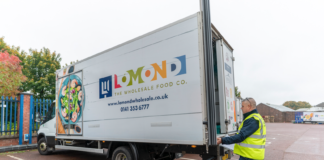Brands are big in homecare, but own-label lines are cleaning up too, writes John Silcox.
Laundry and homecare chores are carried out all year round, but contract caterers often find they hit a peak in summer, which coincides with the influx of tourists to the UK and a surge in their activities. Savvy wholesalers can capitalise on this opportunity today, by stocking up on the right mix of brands and formats of cleaning products and detergents. However, it is essential that they don’t let their retail customers fall by the wayside.
The power of names Brands are important
Brand identity plays a very big role in the laundry and homecare sector. The largest companies spend heavily on outward-facing marketing campaigns that catch the public’s eye for retail and the customer’s eye for caterers, acting instantly as a badge of approval.
Top 10 products for retail and foodservice
1/ Own-branded bleach
2/ Fairy liquid
3/ Persil powder laundry detergent
4/ Ariel liquid detergent
5/ Cif Cream
6/ Cilit Bang
7/ Febreze Fabric Refresher
8/ Flash floor cleaner
9/ Own-label window cleaner
10/ Comfort fabric softener
Procter & Gamble is believed to splash out nearly £200m annually on advertising in the UK alone. Meanwhile, Unilever broke a record by spending £10.5m to market the relaunch of its Persil Small & Mighty laundry liquids.
Yilmaz Erceyes, Procter & Gamble’s brand manager for fabric care, says the marketing effort behind those and other products means demand for them will be strong: “With significant marketing and communication being put behind our upgrades, wholesalers should make sure that they make room for P&G products within their range to meet consumer demand.
“Availability is a vital factor for laundry shoppers, particularly when on top-up shopping missions, so it’s essential that retailers list the leading category brands and ensure the fixture is full at all times.”
In with the new Innovation with formats
By stocking big brands, wholesalers also benefit from these companies’ heavy investment in research and development, leading the way in terms of new product development and innovation.
According to data from analysis and consulting firm IRI, powders are still the largest sector of the laundry market. However, shoppers have been quick to adopt new formats of concentrated liquids and gels, which now account for 37% of the category.
“Concentrated liquids are becoming increasingly important, yet shoppers often fail to find these products in their local convenience stores,” says Tom Hazelden, Unilever UK’s Partners for Growth controller and retail execution manager for convenience.
“These formats satisfy a number of key customer requirements: environmental concerns, improved fragrance and reduced packaging.”
For foodservice companies, these innovations add value to their services and help them to meet growing environmental requirements, as well as enable them to make operational efficiencies by washing items at lower – and therefore cheaper – temperatures.
Small is beautiful Scaled down pack-sizes
Environmental concerns play a part in the scaling down of pack sizes and the modification of materials used to package products. Ecover now uses plastic waste retrieved from the sea to create sustainable and recyclable plastic bottles.
Smaller packages are extremely attractive to wholesalers because they free up warehouse space and cost less to transport. They’re also good for c-stores with limited space. Many such stores have customers based nearby, and who are elderly or don’t drive so would have difficulty transporting large and bulky products.
Will Herbertson, Procter & Gamble’s brand manager for homecare, says that as household products can sometimes be a last-minute purchase, they play directly into the hands of convenience retailers.
“Those stores that ensure they have a well-stocked homecare aisle with key brands from leading manufacturers are in a great position to make the most of the growth opportunities available.”
Brands aren’t everything The rise of own-label
There are also large opportunities in own-label sales. A recent study by AXA showed that 70% of shoppers have recently switched to own-label.
This is affecting catering, too. Jill Livesey, shopper insight & marketing director at Him!, explains: “Up to 50% of customers expect own-label cleaning products. There is clearly an opportunity to better understand foodservice and catering customers’ needs,”
One thing is clear – the expectation for value is higher than ever: “A strong value proposition is important, but further discount is always expected.”







